Europe
‘Unprofitable’ nickel and the colonial legacy in New Caledonia
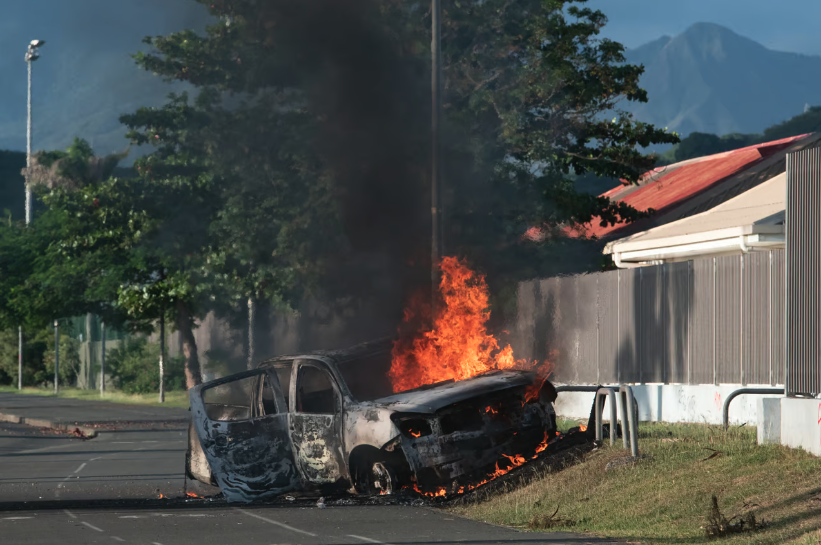
Violent protests in Nouméa, the capital of the French overseas territory of New Caledonia in the South Pacific, which have left five people dead, have alarmed the French government.
While Paris declared a state of emergency in the region, blaming “external forces” for the unrest, the island’s indigenous population argues that the new law in the French National Assembly will reduce indigenous representation.
“The proposal to reopen the electoral institution is nothing more than a return to the settler-colonial strategy,” New Caledonian Kanak Senator Robert Xowie, a member of the French Senate, told Interior Minister Gérald Darmanin in March.
A brief history of colonialism
When New Caledonia was recognised as part of the Second Empire in 1853, European settlers flocked to claim indigenous land and set up independent cattle farms.
This low-tech agricultural economy was eventually fuelled by colonial ambitions to turn New Caledonia into a sugar island, similar to the plantations of the Caribbean and Mauritius.
Wealthy planters from Réunion, another French overseas territory in the Indian Ocean, moved in due to crop shortages and invested heavily in sugar cane plantations south of New Caledonia’s capital, Noumea.
These landowners brought with them thousands of ‘indentured labourers’ of Indian, Vietnamese and Chinese origin. Together with the indigenous Pacific Islanders, the Kanaks, these immigrants formed the underclass of New Caledonian colonial society. As landowners and bureaucrats working in France, they would work to enrich wealthy French landowners who were not part of the archipelago society.
The aim of the French white settler landowners was to send their profits to the settler colony in Australia in the hope of ‘economic mobility’ in Europe. New Caledonia as a colony therefore only functioned for the white settlers in the exploitation of natural resources.
How did the self-determination process work?
In the 1980s, when New Caledonia was rocked by violence, including assassinations and kidnappings that left dozens dead, tripartite agreements were finally reached between independence supporters, French supporters and the French government, recognising the Kanaks as the indigenous population of New Caledonia and launching a process of self-determination.
The Nouméa Agreement of 1998 promised that the French Republic would devolve more political power to New Caledonia and its original inhabitants, the Kanaks, over a twenty-year transition period and provided for independence referendums.
The referendums were held in 2018, 2020 and 2021. Although these votes were in favour of ‘staying with France’, the Kanak Socialist National Liberation Front (FLNKS), a coalition of pro-independence parties, had called for the vote to be postponed and for the Kanaks not to participate, arguing that ‘lockdown’ measures and traditional mourning ceremonies during the pandemic had prevented a proper campaign. In 2021, turnout in the referendum was 43.8 per cent.
Protests against the proposed reform of the region’s electoral body, which independents say will weaken the representation of the indigenous Kanak population, are fuelled by deep economic turmoil in the region.
New Caledonia’s wealth is largely derived from its struggling mining sector. With almost 30 per cent of the world’s reserves of nickel, an important material for making stainless steel and batteries for electric vehicles, New Caledonia was expected to play a major role in Europe’s race to catch up with China for critical raw materials.
However, nickel production in the region has fallen sharply and foreign investors have begun to leave the archipelago. The industry suffers from export restrictions imposed by the New Caledonian authorities and high energy costs, making nickel production much more expensive and less profitable than in Indonesia and other Asian competitors.
Huge gap between Kanaks and Europeans
According to the 2019 census, 41.2 per cent of New Caledonia’s population identifies as Kanak and 24.1 per cent as European, with the former group facing significant socio-economic challenges, including lower wages and higher poverty rates.
For example, according to a 2014 study, in 2009 a young non-Kanak was seven times more likely to have a tertiary education than a young Kanak.
A 2012 statistic showed that only 3 per cent of Kanaks had completed tertiary education, compared to 23 per cent of the rest of the population, while the unemployment rate among young native Kanaks was 38 per cent, four times higher than the rest of the population.
In 2010, one in five jobs paid less than two-thirds of the minimum wage in mainland France, and the proportion was much higher in agriculture, domestic work and hotels and restaurants, where part-time work is common.
These low wages must be seen in the context of the very high prices in New Caledonia. With a minimum wage of 78.5 per cent of the French level and prices 34 per cent higher, the purchasing power of minimum wage earners was 59 per cent of the metropolitan level, and even 50 per cent for agricultural workers.
More strikingly, among the regions that make up New Caledonia, the poverty rate reached 52 per cent in the Loyauté Islands, compared to 9 per cent in the Southern Province. In 2014, the employment rate was 65 per cent in the Southern Province, 52 per cent in the Northern Province and 40 per cent in the Loyauté Islands. It should also be noted that the Kanak population in Loyauté is 94.6 per cent.
The collapse of nickel
Despite hundreds of millions of euros in French subsidies, the nickel industry continues to collapse, with production in the first quarter down 32% on the same period last year.
French officials warned in 2023 that New Caledonia’s three main nickel processing plants could soon close, increasing unemployment on the island by 50%.
As protests grow, major investors such as Switzerland’s Glencore and France’s Euramet are either pulling out or refusing to invest further.
Last year, the government came up with a new plan to bail out the industry with subsidies of up to 200 million euros to lower energy prices. But instead of easing tensions, the new ‘Nickel Pact’ was criticised by the New Caledonian independence movement as a ‘colonial pact’ that would give too much power to local authorities.
After months of negotiations, New Caledonia’s representatives blocked ratification of the pact, which is still on ice.
The pact was an attempt by French Finance Minister Bruno Le Maire (who visited New Caledonia on a fact-finding mission in November 2023) to provide around 200 million euros in emergency aid, on condition that New Caledonia’s nickel industry commits to deep reforms to reduce production costs and possibly find new markets in Europe.
The Kanaks argue that the pact in its current form does not ask for enough commitment from the nickel industry companies and also requires New Caledonia to find more than $65 million to finance a cost-cutting electricity scheme, which would require the introduction of new taxes and thus increase the burden on the local population.
No more colonial mining
The mining sector in New Caledonia still bears the mark of colonialism. Considered the cheapest and most aggressive method of extraction, “open-cast” mining was favoured by mining companies for its simplicity, and its immediate environmental damage was ignored. So much so that 330 mines were opened over a period of time on an island 30 times smaller than France, where only 256 mines were open at the height of the coal mining boom.
In the 1930s, the indigenous Kanaks were moved to reservations covering only 10 per cent of their ancestral land in an attempt to increase the availability of mineral rights without harming the cattle industry.
Currently, the mining industry on the island is controlled by three major companies. The largest is SLN, a subsidiary of the French metallurgical company Eramet. The Koniambo nickel plant is operated by Glencore, which is majority-owned (51%) by the Northern Province, where the plant is located. The Brazilian mining consortium Vale operates a large hydrometallurgical plant in the Southern Province.
Europe
EU considers new €100 billion support fund for Ukraine

The European Union (EU) is reportedly considering the creation of a special €100 billion ($117 billion) support fund for Ukraine due to the ongoing war, which “shows no signs of ending.”
According to a report by Bloomberg, citing sources familiar with the matter, the fund is intended to be part of the EU’s next seven-year budget. If approved by member states, payments would begin in 2028 and continue until 2034. Discussions on the budget and related proposals are expected at the end of July, with the draft of the seven-year financial plan scheduled for release on July 16.
Existing aid totals €160 billion
Since the start of the war, the EU has provided approximately €160 billion ($187 billion) in aid to Ukraine. This amount includes a €50 billion fund providing grants and loans to Kyiv through 2027. This year, EU countries have pledged €23 billion in military aid to Ukraine and have also allocated a €30 billion loan secured by Russia’s frozen assets.
Concerns over Ukraine’s budget deficit
According to the Financial Times (FT), the EU is seeking ways to cover Ukraine’s budget deficit, which is projected to be between $8 billion and $19 billion in 2026. EU Commissioner for Economy Valdis Dombrovskis stated that the bloc is ready “to provide all necessary support to Ukraine for as long as it takes.”
Dombrovskis added that the European Commission will explore options to increase aid “using the EU budget and revenues from Russia’s sovereign assets,” but noted that the International Monetary Fund must first assess the potential deficit.
The burden shifts to Europe
Bloomberg interprets the EU’s move to increase its military and financial support as a reaction to the shifting stance of the US, particularly with the potential for a Donald Trump presidency. The agency emphasizes that establishing the €100 billion fund would “shift the burden of support for Ukraine even more onto Europe.”
European officials speaking to the FT noted that many in Brussels had expected a ceasefire agreement between Russia and Ukraine this year, which could have eased Kyiv’s budget problems. However, the lack of progress in peace talks has forced the European Commission to reorganize spending within its current financing plans for Ukraine.
Europe
Europe’s largest port prepares for potential war with Russia
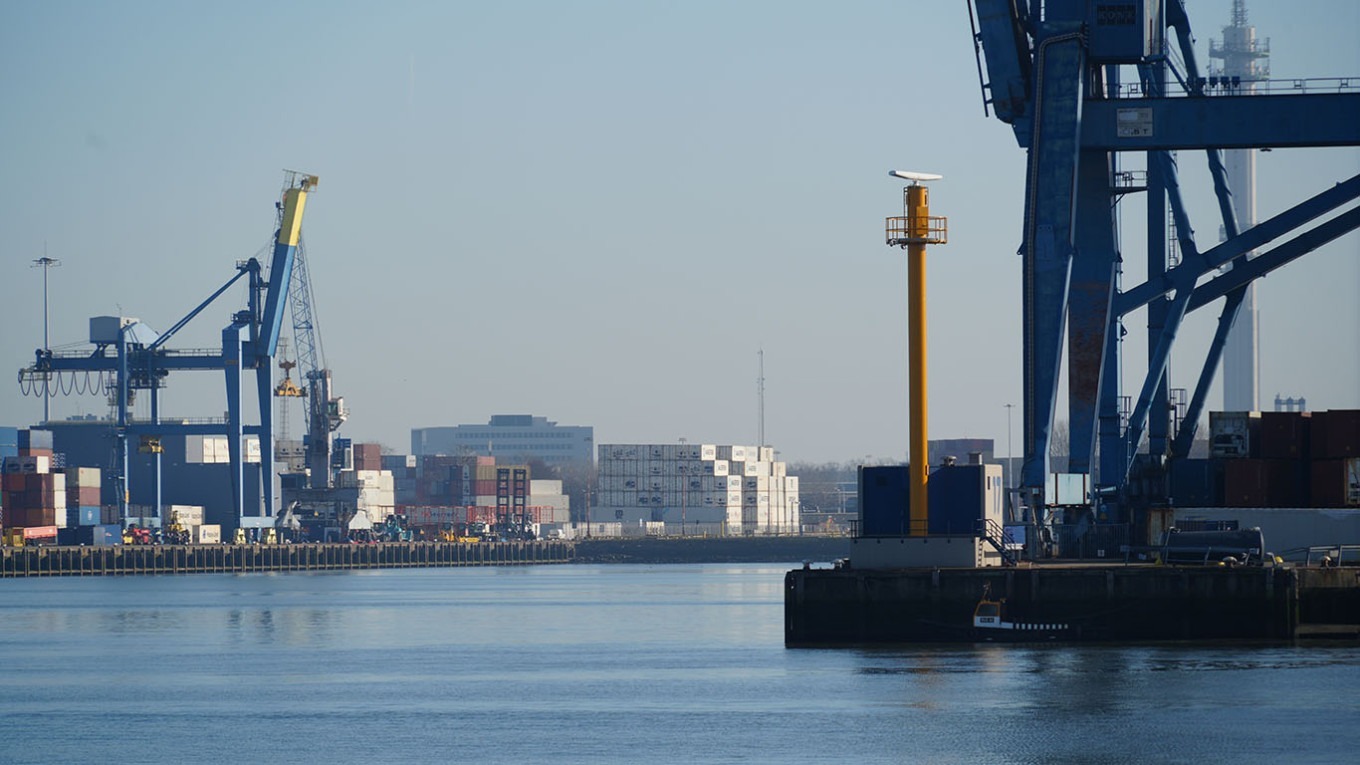
According to the Financial Times, the Port of Rotterdam in the Netherlands, Europe’s largest port, has begun allocating space for NATO military cargo and planning routes for weapons shipments in preparation for a potential war with Russia.
Landing exercises will also be conducted at the port. Although the port has previously handled weapons shipments, it did not have a dedicated pier for this purpose, even during the peak of the Cold War. Under the new plan, a section of the container terminal will be refitted to allow for the safe transfer of ammunition from one ship to another.
Port Director Boudewijn Simons stated that military shipment logistics will be coordinated with the neighboring Port of Antwerp in Belgium, the EU’s second-largest. Simons emphasized that this cooperation will be particularly important for receiving cargo from the US, the UK, and Canada. “We increasingly see each other less as competitors. Of course, we compete when necessary, but we work together where we can,” said Simons, adding that when large volumes of weapons need to be transported, Rotterdam will ask Antwerp or other ports to handle part of the load, and vice versa.
The Dutch Ministry of Defence confirmed in a statement in May that the port would provide space for military shipments at NATO’s request. This decision was made within the framework of the European Union’s rearmament program, through which the bloc aims to reduce its defense dependency on the US.
The Port of Rotterdam is also used as a center for storing strategic oil reserves. In this context, Simons called on European countries to take precautions regarding other critical resources such as copper, lithium, and graphite. The EU is expected to present a “stockpiling strategy” on July 8, which will cover medical supplies, critical raw materials, energy equipment, food, and water.
Europe
Germany’s SPD faces ‘Russia rebellion’ at party congress

Divisions within Germany’s Social Democratic Party (SPD) over rearmament and relations with Russia are set to culminate at its upcoming congress, where party leader and finance minister Lars Klingbeil faces backlash from a faction within his party.
According to a report in the Financial Times, one of the critics of the SPD leadership is the eldest son of former SPD Chancellor Willy Brandt, who still holds significant influence over the party with his Ostpolitik (Eastern Policy), a policy of rapprochement with the Soviet Union at the height of the Cold War.
Peter Brandt, a 76-year-old historian, has co-signed an SPD motion criticizing the government’s rearmament plans and advocating for “de-escalation and a gradual return to cooperation with Russia.”
The manifesto, published ahead of this week’s SPD party conference, states, “There is a long road ahead to return to a stable order of peace and security in Europe.”
While acknowledging that strengthening the defense capabilities of Germany and Europe is “necessary,” the authors emphasize that these efforts must be “part of a strategy aimed at de-escalation and the gradual restoration of trust, not a new arms race.”
Peter Brandt told the Financial Times that Klingbeil approved the new defense spending increase “without checking if it was the majority view.” He added, “This is a problem. There isn’t as clear a stance among the members as is reflected in the leadership.”
The criticism comes as Klingbeil, deputy chancellor in the coalition government led by Christian Democrat Friedrich Merz, prepares a major “funding injection” for the military, aiming to increase the country’s defense budget by 70% by 2029.
Brandt’s words are a reminder that many Social Democrats remain reluctant to fully embrace the country’s “Zeitenwende” (turning point) in defense policy, announced by former SPD Chancellor Olaf Scholz following the 2022 invasion of Ukraine.
The internal rebellion could create problems for Klingbeil, who negotiated the coalition agreement with Merz after the SPD’s worst-ever election result in February. The dissenters could make it difficult for the government, which holds a slim majority of just 13 seats, to pass legislation on the budget, arms deliveries, and the planned return to compulsory military service.
Uwe Jun, a political scientist at the University of Trier, noted that while the rebels are not a majority in the SPD, they are not a small minority either. “There is a long tradition in the SPD of people who came from the peace movement of the 1970s and 1980s,” he said. “They are critical of anything related to the military.”
Klingbeil’s reorganization of the party leadership following the election fiasco has further fueled the controversy. The 47-year-old politician is accused of consolidating his power after replacing 66-year-old Rolf Mützenich as the head of the SPD parliamentary group. Mützenich is also a signatory of the manifesto.
“Personal and political tensions are also playing a role,” said Gesine Schwan, a political scientist and SPD member who was asked to sign the motion but declined.
Klingbeil, who grew up after the fall of the Berlin Wall, has tried to shift the party’s foreign policy stance. In a series of speeches and editorials in 2022, he admitted that the party had “failed to realize that things in Russia had already been moving in a very different direction.”
The manifesto’s signatories argue that the pursuit of peace must be the priority. Ralf Stegner, who helped draft the text, caused controversy last month when it was revealed he had traveled to Azerbaijan in April to meet with Russian officials, including one under EU sanctions.
Stegner, 65, who at the time served on the parliamentary committee overseeing Germany’s intelligence service, defended the meeting, stating that MPs from Merz’s CDU had also attended to keep communication channels with Moscow open.
“You have to keep talking to everyone,” Stegner told the Financial Times. “The insinuation that this means agreeing with what others say or being a secret agent for a third party is, of course, complete nonsense.”
Stegner’s stance reflects the continued nostalgia within the SPD for Willy Brandt’s Ostpolitik. According to a party insider, members who joined the SPD under Brandt’s leadership, now in their 60s, make up 58% of the membership.
Peter Brandt, who said he never fully shared his father’s views, explained that he signed the manifesto because he believes the Russian threat is exaggerated.
“I do not agree with the idea that Russia will attack NATO,” said the younger Brandt. “The Russian army has shown weakness in the Ukraine war.”
He added that NATO is “currently superior to the Russian army in conventional terms, even without the Americans,” and called NATO’s goal of dedicating 5% of GDP to defense “unreasonable.”
Klingbeil, however, pointed out that Willy Brandt, who won the Nobel Peace Prize in 1971, also oversaw large defense budgets exceeding 3.5% of GDP.
“And ultimately, I don’t think anyone would associate Willy Brandt with someone who focused solely on military matters,” the SPD leader remarked.
Jun said Klingbeil symbolizes the “new school of thought within the party,” adding that the SPD’s younger MPs are “quite pragmatic” on Russia.
But Schwan believes Klingbeil will have to contend with the “old guard” for a while longer. “De-escalation, security, and peace policy are still part of the SPD’s DNA,” she said.
-
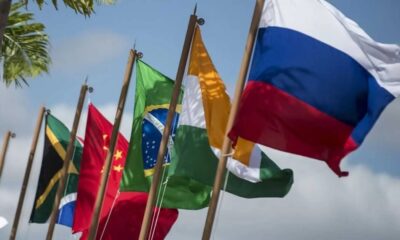
 Diplomacy2 weeks ago
Diplomacy2 weeks agoBRICS internal trade volume hits the $1 trillion mark
-
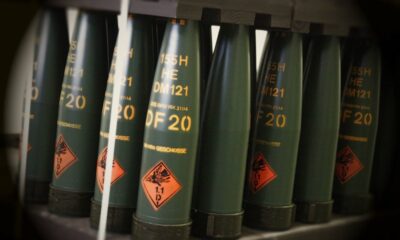
 Diplomacy2 weeks ago
Diplomacy2 weeks agoGerman arms industry expands presence in India amidst geopolitical shifts
-

 Asia2 weeks ago
Asia2 weeks agoJapan’s prime minister skips NATO summit amid alliance strain
-

 Diplomacy2 weeks ago
Diplomacy2 weeks agoXi Jinping to miss BRICS summit in Rio for the first time
-
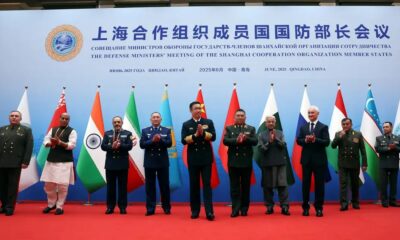
 Asia2 weeks ago
Asia2 weeks agoChina hosts SCO defense ministers on warship amid regional tensions
-
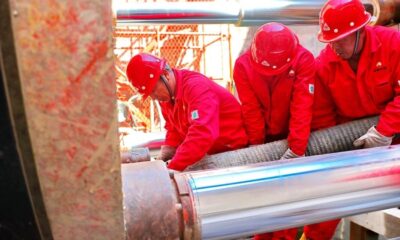
 Russia2 weeks ago
Russia2 weeks agoChina’s energy pivot: Power of Siberia 2 gains traction after Iran-Israel conflict
-

 Interview2 weeks ago
Interview2 weeks agoRetired Vice Admiral Kadir Sağdıç: ‘Closing Hormuz would benefit the US-Israel’
-

 Middle East2 weeks ago
Middle East2 weeks agoUS intelligence contradicts Trump’s claim of destroying Iran’s nuclear program


















